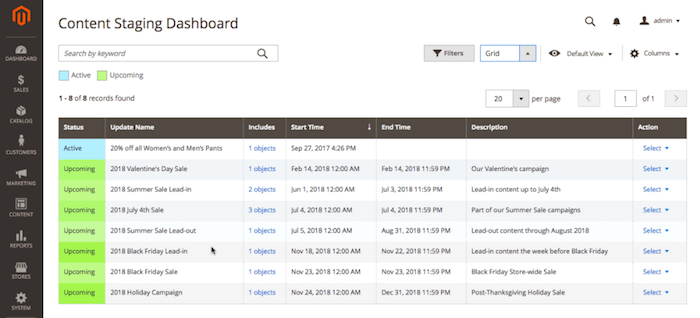What to Automate Vs. What to Keep in Manual Control?

Image courtesy of KiSSFLOW
Retail technology offers merchants new levels of efficiency, agility, and potential to scale. With all the tools at retailers’ disposal, it can be tempting to take on a “set it and forget it” mentality. But few customers are satisfied with a cookie-cutter experience. On the contrary, they want to feel like an ecommerce site solves the problems unique to them. So how do retailers decide what processes to streamline through automation versus how to manually tailor the customer experience?
There are several considerations to determine the best answer for your ecommerce business. In reading each point, know your answer to this all-important question: What is my team’s bandwidth? In other words, if you set up a system that requires intensive employee oversight, and your team doesn’t have the bandwidth to take it on, the system will ultimately fail. Nobody wants this to happen. Instead, let’s find the right balance between manual admin and automation for your business.
For the Frontend: Product Marketing

Product recommendations are an excellent way to increase the average order value on your site. As you plan for them on your site, think about your company’s philosophy behind them.
Perhaps you’re a wearable brand that releases clothing collections, as is the case with the Fresh Cut pieces from Pam & Gela. They’ve created a collection of track and field inspired clothing, and each piece is covered in big, beautiful floral print. By clicking on one item, like the Fresh Cut Track Jacket, the site also recommends the pants and the dress from the Fresh Cut collection. When a retailer’s products fall within easily-defined collections, it can be super useful for the marketing team to set up automatic product recommendations.
Perhaps your company emphasizes an eclectic style where all sorts of different clothing comes together in a single look. Or you also sell hats, socks, and shoes, and you want to show your product range in the site recommendations. Maybe you have overstock in a particular style of jeans, and you’re looking to boost the sales of this style. In all of these cases, retailers want to give their marketing teams greater ability to hand-select products for recommendation.
There’s also a happy medium here, and a lot of retailers choose a hybrid model of these two scenarios. In these cases, the marketing team is given the ability to specify products, but if no products are selected, the site automatically generates recommendations based on pre-set criteria.
Additionally, there are third-party applications that can help retailers collect data to determine categories for recommendations, such as Frequently Viewed Together, Often Bought With, and other user-generated feedback. Data reporting tools can be a critical component for establishing where your site needs automation.
The main thing to keep in mind is: will your marketing team have the time to curate products on your site? If suggesting cool styles is part of the value behind your brand, you’ll want to make it a priority for the team. But if your products fall into more immediate associations, as in collections, then automation tools could be a great solution.
Scheduling Sales and Promotions

Several ecommerce platforms, like Shopify and Magento, give marketers the ability to schedule sales and promotions in advance. These tools are available out of the box. For example, in 2017, Shopify introduced Launchpad. Launchpad allows merchants to plan future sales campaigns, product discounts, and more. A marketing team can sit down together in January and plan the entire year’s worth of sales and promotions. Further, the campaigns can occur anytime and last for any amount of time – from minutes to months.
Soon after Shopify released Launchpad, Magento promoted a similar solution in the Content Staging Dashboard on their platform. Here marketers can prepare and schedule content around upcoming sales long before the sale actually begins. Retailers can really benefit from tools like this, especially during exceedingly busy times of the year, such as Black Friday. By creating an automated campaign, the marketing team’s time becomes open for brainstorming new ideas, handling last-minute emergencies, or anything else of benefit to the company.
There’s also a hybrid solution between automation and manual scheduling for sales and promotions. While it’s efficient to set sales campaigns on auto, retailers also want to retain their ability to pivot. Imagine this: you sell t-shirts on your site. One summer Friday morning, Lady Gaga holds an outdoor concert on the Today Show, and she wears one of your shirts. People go wild on social media for her look. When this good fortune strikes, you want to be able to immediately promote the shirt on your site in connection with her performance.
So while you have long-term sales automation in place, your marketing team will be available to pivot on the fly. This is a great example of finding the balance between automatic and manual marketing.
For the Backend: Order Fulfillment and Shipping

Thus far, we’ve talked about automating tools that increase online customer purchases – product recommendations and sales campaigns. Now let’s turn to the other way retailers can boost profit: by lowering expenses on the operational side.
Backend automation can add greater efficiency, particularly in the order fulfillment process. For instance, when a customer finalizes a purchase, the information about it should be automatically communicated to the business’ Enterprise Resource Planning (ERP) system. No one on the operations team should ever have to re-enter an order into a separate ERP. Likewise, shipping notifications to the customer should be automated.
Tiffany, our Tech Lead, explains it like this, “At some point in time, you outgrow your ability for a group of humans to log into the website administration tools and fulfill orders. When that happens, automation is critical. In fact, it’s the only way you can grow. This is where we see the differentiation between a start-up and a more mature ecommerce operation.”
As you set out to determine what to automate and what to address manually in your ecommerce business, remember Tiffany’s advice. Can you ease some processes for your employees through automation? Would this allow you to grow your business in new ways? Where in your business do you want to retain the human touch? What’s the team’s bandwidth for handling more manual aspects of the business? No matter how you answer these questions today, retail technology can help you strike the balance between manual admin and automation.
